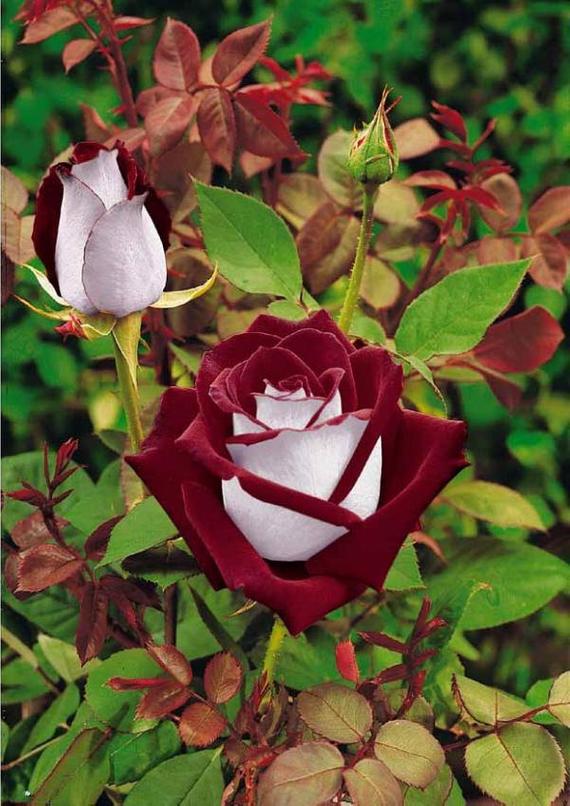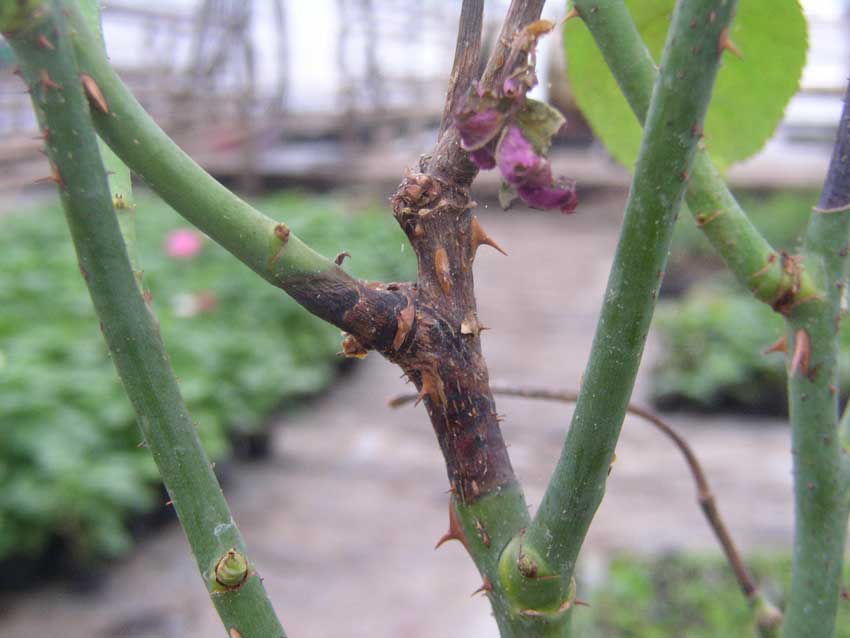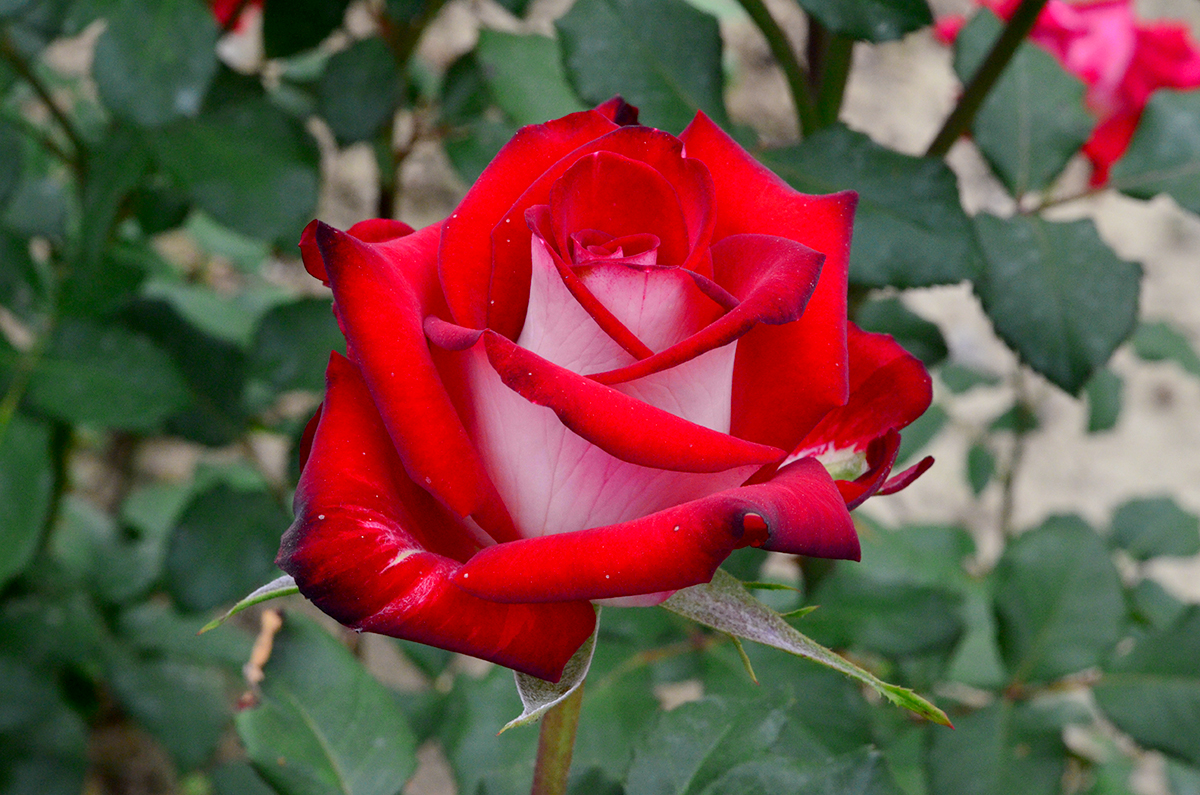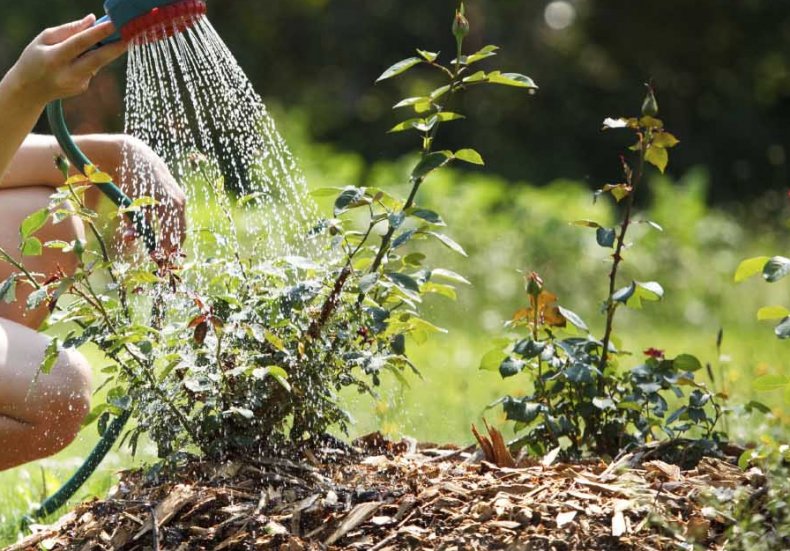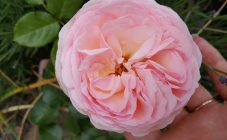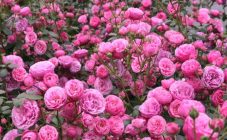Content:
Roses of the hybrid tea family always attract the eye, even in photographs, in a live form they can not leave anyone indifferent. This is exactly what the extraordinary hybrid osiria rose is like.
History
A dazzlingly beautiful two-tone rose appeared in Germany in 1978. This hybrid was bred by the Reimer Cordes breeding company. The originators have not yet disclosed the varieties that were used for hybridization, but it is known that one of them is the Snowfire variety. The very name of the rose is mysterious - Osiria, in honor of the ancient mythical country Assyria, which, like Atlantis, sank in the world's oceans.
Characteristics and features of the variety
This wonderful flower has good frost resistance - it keeps up to minus 23 degrees (under cover). The time of planting in the soil is from March to October, flowering occurs in June, lasts until September. The hybrid is re-flowering, i.e. blooms several times per season with breaks between flowering. Rose bushes develop well, have an erect (or slightly spreading) appearance, are quite powerful, reaching a height of up to 1.1 meters. The crown width when carrying out molding trims is 0.9 m on average.
Leafiness is observed along the entire length of the shoots. The leaves are large enough, characteristic of roses, the shape, dark green color, the surface is smooth, matte, there are teeth at the edges.
The most important feature that the Assyria rose can boast of is the unusual color of the flowers: from the inside they are dark red, densely double, velvety in structure, the reverse is creamy white with a silvery tint. Some florists compare the color of Osiria to a ripe cherry or strawberry. In the half-open state, the bud resembles a glass, having blossomed - an open bowl. The flower is quite large and lush, reaching 11-12 centimeters in diameter. Flowering lasts up to two weeks, while decorativeness is maintained all this time. The aroma is very strong, pleasant, literally "heady", intensifies in the evening hours.
Hybrid tea rose Osiria in bush and standard form is used to decorate summer cottages, and are also used in cut form to form delightful bouquets. Subject to the rules of agricultural technology, it can grow and bloom well in one place for several decades.
Characteristic The variety suggests that it has average resistance to diseases of flowering plants, both infectious and non-infectious:
- sunburn in the absence of proper shading;
- aging, which all grafted roses are subject to: thickening of the stem in the root zone, fungal infections, accumulation of diseases;
- deficiency of nitrogen, magnesium, potassium, phosphorus and other minerals, which is expressed in chlorosis.
Common rose infections include stem cancer, powdery mildew, rust, gray mold, and viral mosaic.
Agricultural technology of cultivation
Rose Osiria has strong, dense stems, from which it is very difficult to obtain layering, therefore the main ways of its reproduction are cuttings and division of the bush.
The stalk is taken from a strong shoot at a time when it is covered with flowers. It is necessary to choose the middle of the shoot, on which there are a couple of sheets, the length of the cutting should be from 10 to 15 centimeters. The cut is made straight (from above), 1 centimeter above the kidney. Cut from the bottom at an oblique angle 6-8 centimeters below the kidney. The leaves are to be pinched off.
It is advisable to treat the lower (root) cut of the cutting with the stimulating Heteroauxin compound for half a day. The soil in the rose garden (or planting containers when planting indoors) also needs to be prepared. It is filled with a peat-sand mixture, humus is also added, everything is processed with a weak manganese solution. Finished cuttings are placed in the soil at a depth of two centimeters, watered with heated water and covered with a film to create greenhouse conditions. The opening of buds on the trunk is a signal of successful rooting of future roses. When the air and soil have warmed up enough (usually by the beginning of May), young Osiria can be planted in open ground.
Roses grow best on loose, slightly acidic soils. The place should be sheltered from the wind and get enough sunlight. Each future bush should be planted at a distance of half a meter from the other. After planting, the root zone of the plant is hilled to a height of at least 15 centimeters.
Reproduction of a rose by dividing a bush is carried out in the spring or autumn. The operation is quite simple - a rose bush is dug up and divided with a shovel or other clean tool into 2-3 parts, while each cut should have a developed rhizome. The wells for planting are prepared in the usual way: they are moistened, fertilized, after which parts of the bush are planted in them.
Like most decorative roses, Osiria hybrid tea is very moody and requires constant care. Since the plant blooms all summer long, it must be pruned periodically to encourage new shoots to grow and bud again. However, the maximum can be cut off no more than two or three flowers and branches on the bush, otherwise the rose may weaken. At the end of flowering (the second decade of October), winter pruning is carried out, followed by covering for the winter.
Timely and competent flower feeding is very important. Adequate content of phosphorus, potassium and magnesium, boron, iron and manganese must be ensured. This affects the correct formation of buds and the classic color of flowers, as well as the development and strengthening of the root system.
It is necessary to water the rose properly - if there is insufficient moisture, the flowers become small and almost stop smelling, if too much, the plant can rot and die. It is optimal to water the rose once every five to seven days in hot weather, for other periods, watering once every 10 days is enough. It is advisable to complete each watering with mulching with humus.
Advantages and disadvantages of the variety
A description of the Osiria rose variety would be incomplete without a description of the advantages and disadvantages of the flower. So, this rose is appreciated for the following advantages:
- stunningly colored flowers and a wonderful aroma, which allows Osiria to be a decoration for summer cottages and bouquets;
- can grow in one place for more than one decade;
- has immunity to insect pests;
- blooms magnificently several times per season.
There are also disadvantages:
- sometimes the bush grows slowly and has rather weak peduncles;
- after the rain, the branches droop due to the weight of the buds;
- under the guise of Osiria, you can get seedlings of other, not so luxurious varieties or plants with a high susceptibility to diseases (from vegetative propagation);
- exacting care.
The hybrid Ossiria tea is a capricious but remarkably beautiful garden rose. If properly cared for, you can enjoy the incredible bicolor buds and wonderful scent of this hybrid tea rose for a long time.
